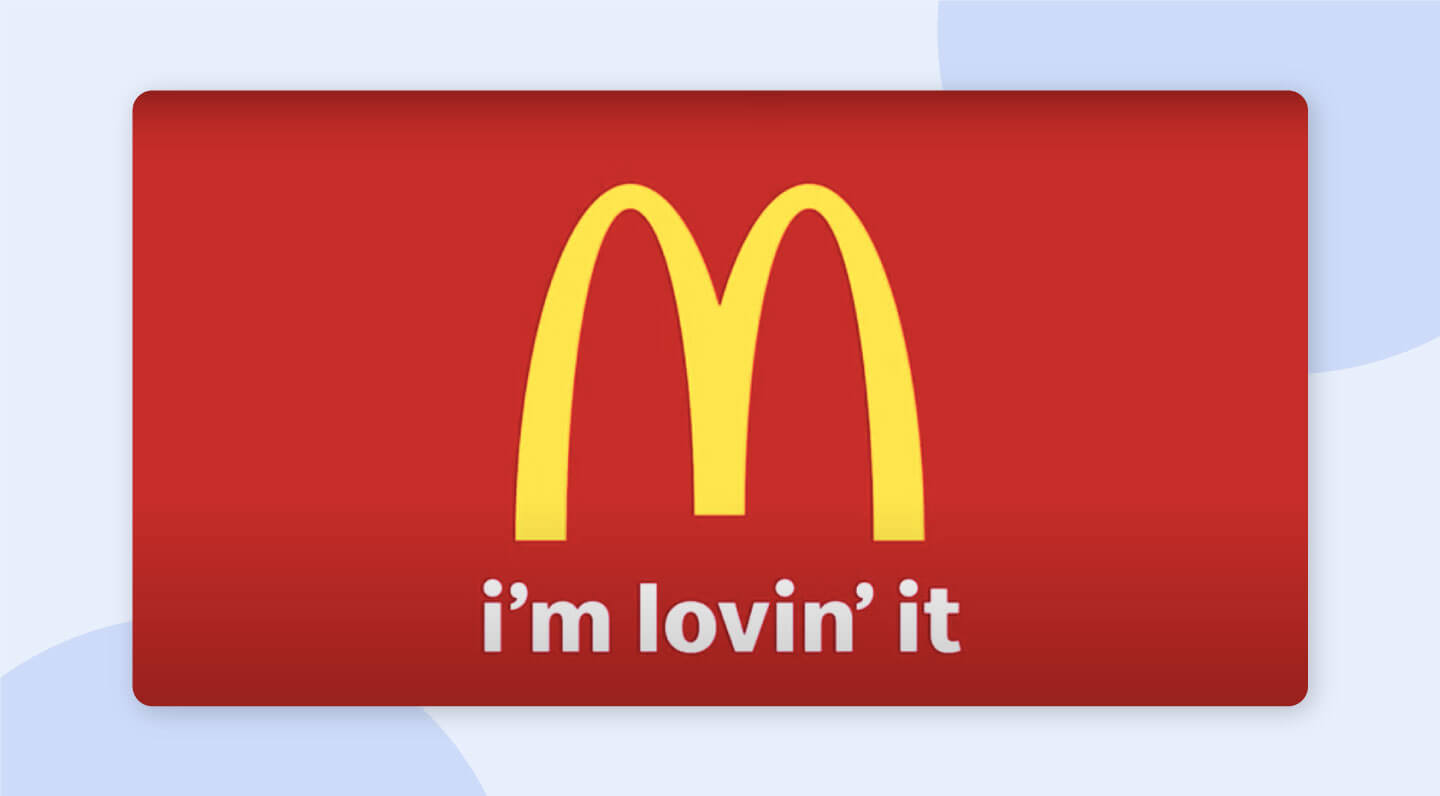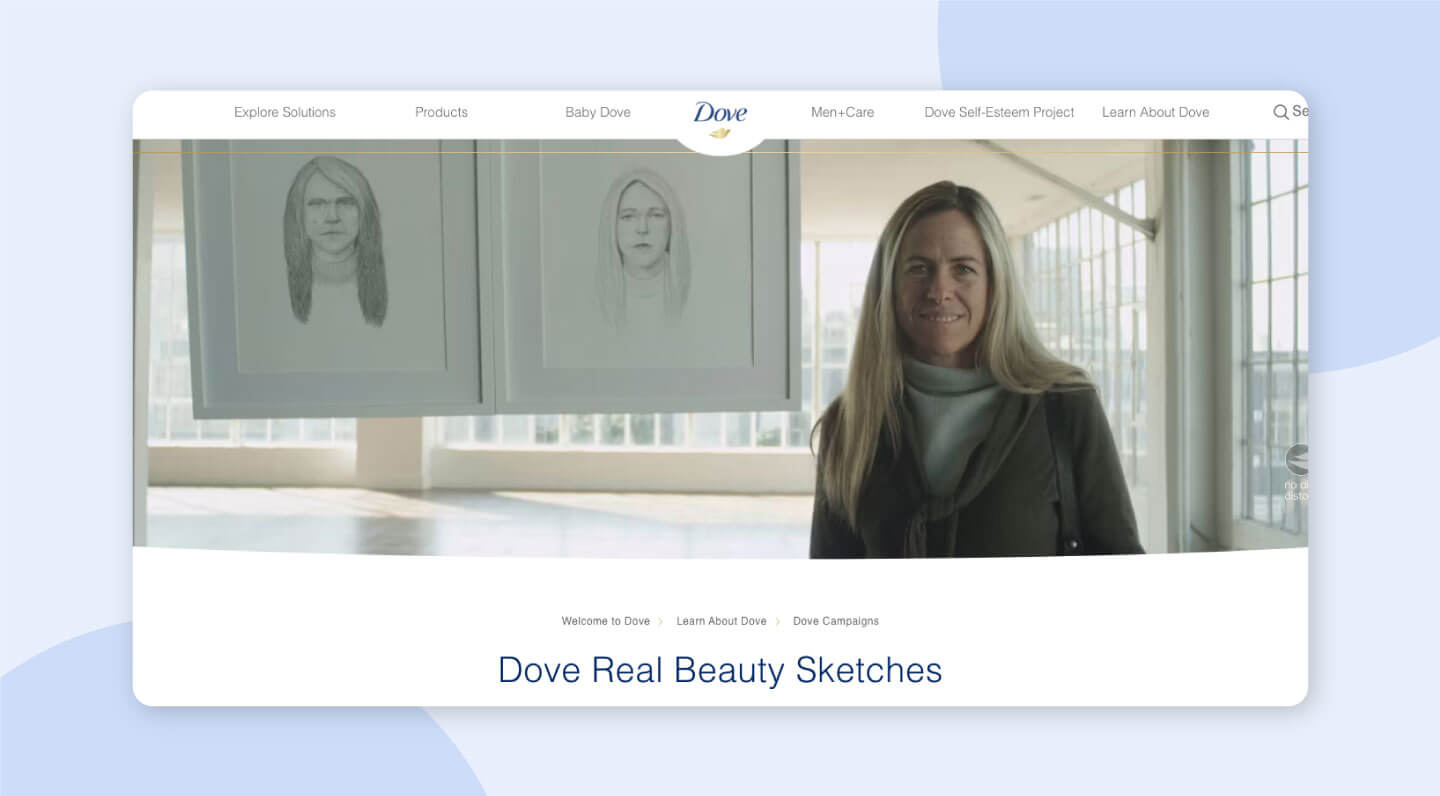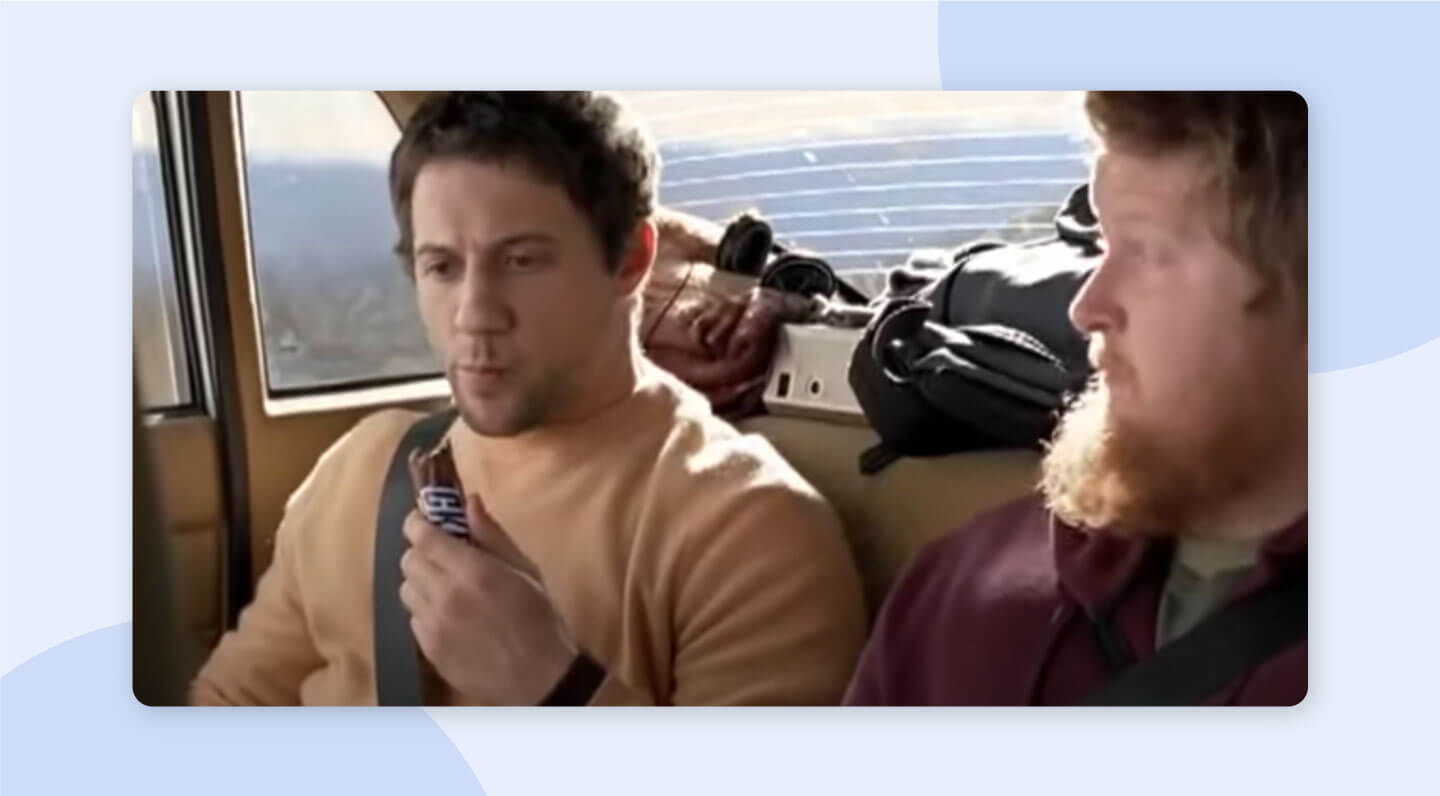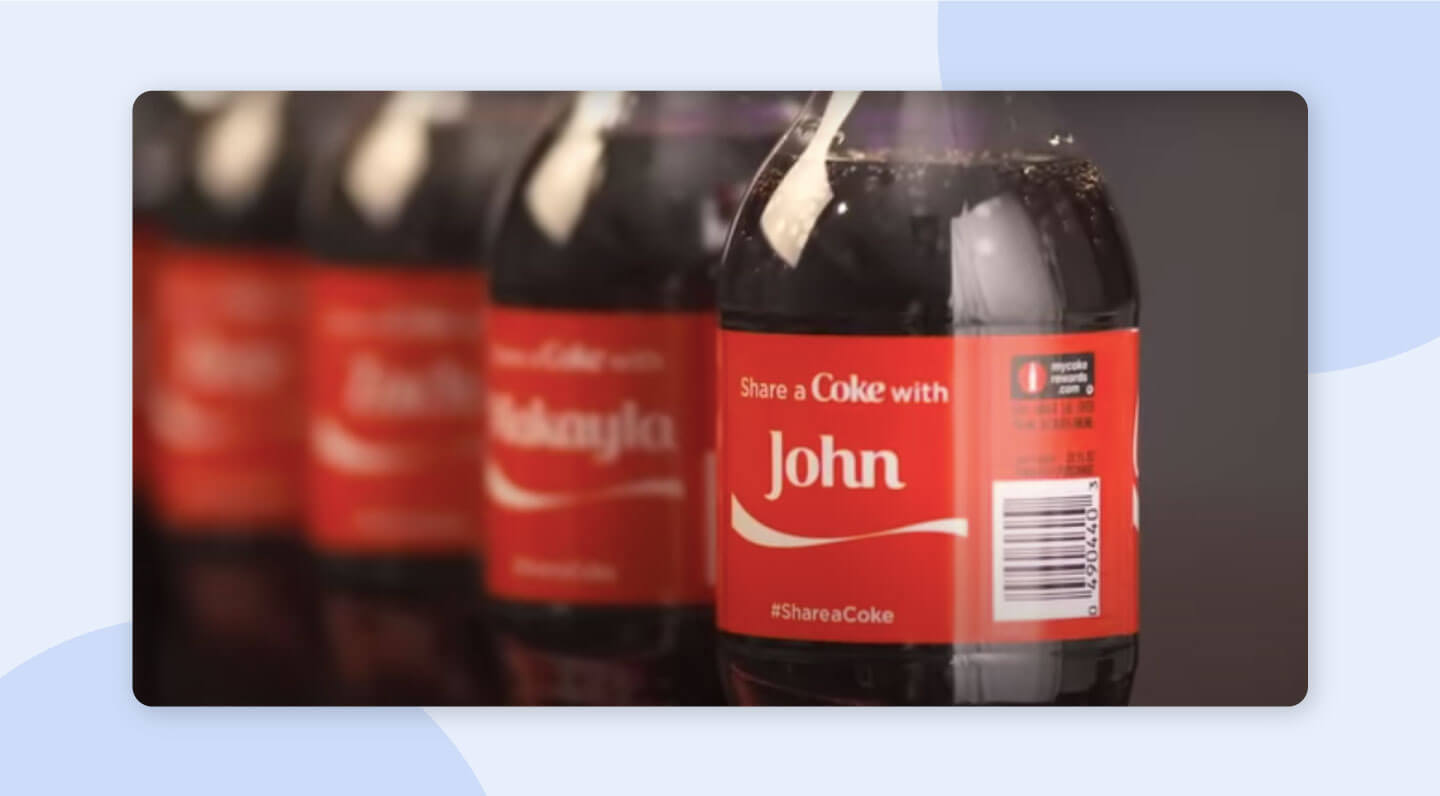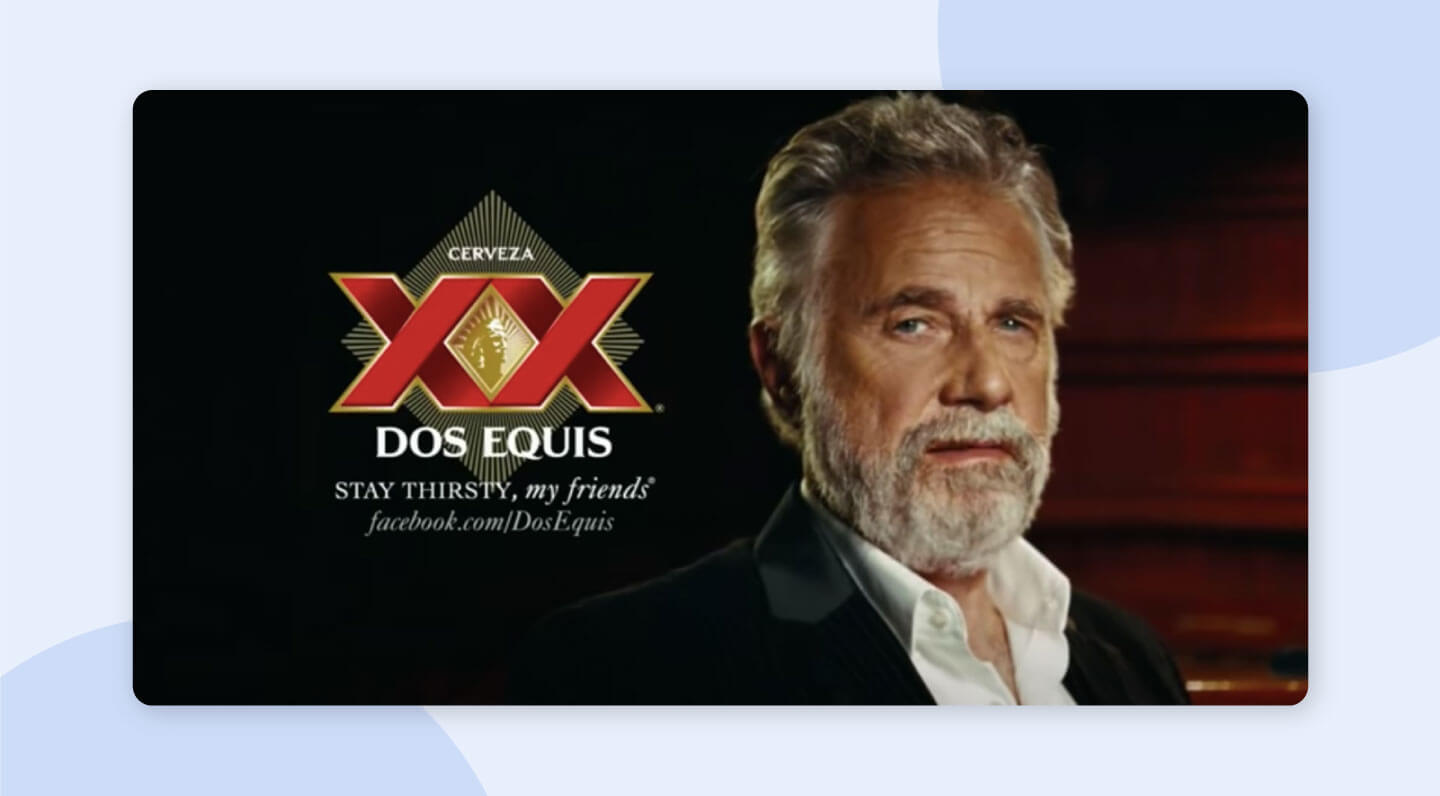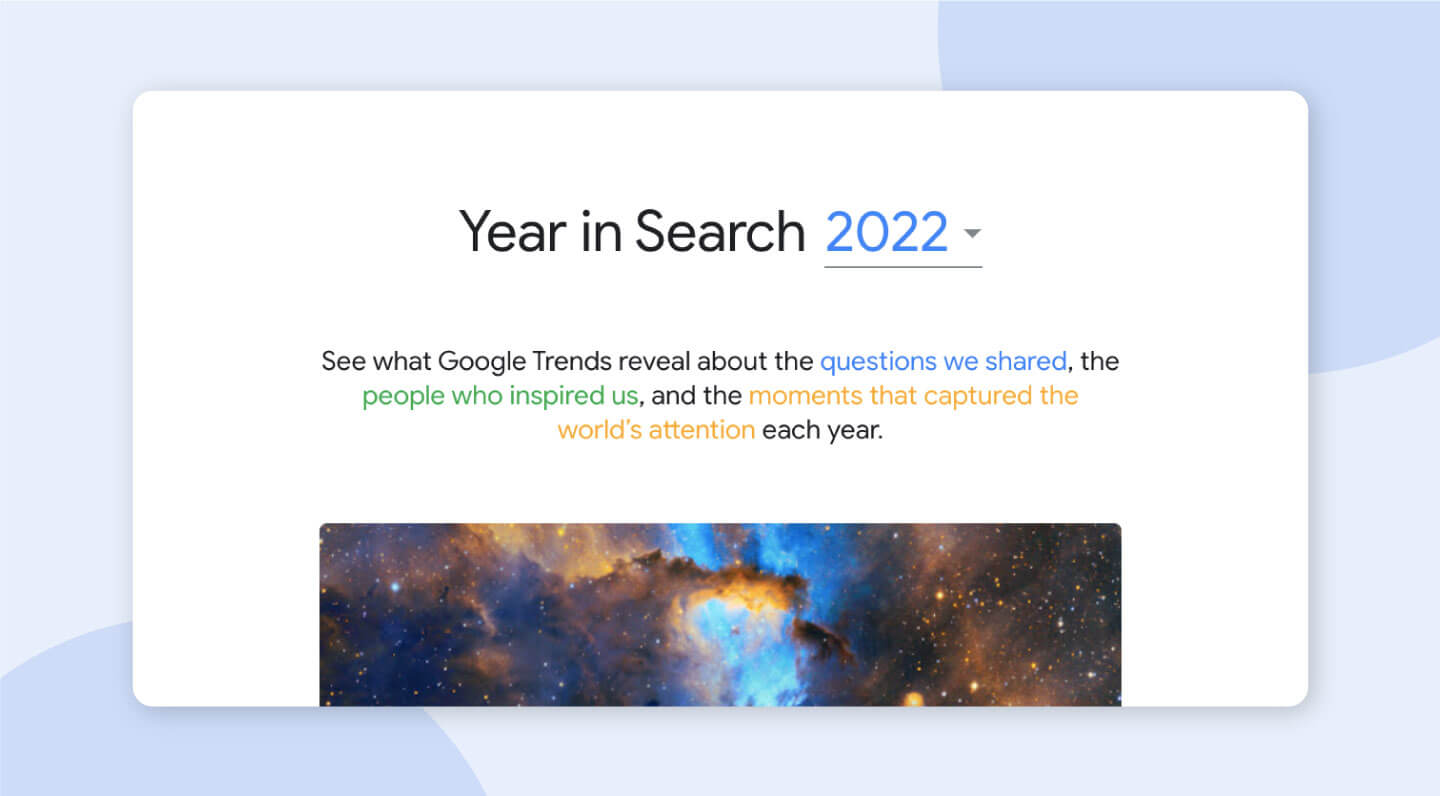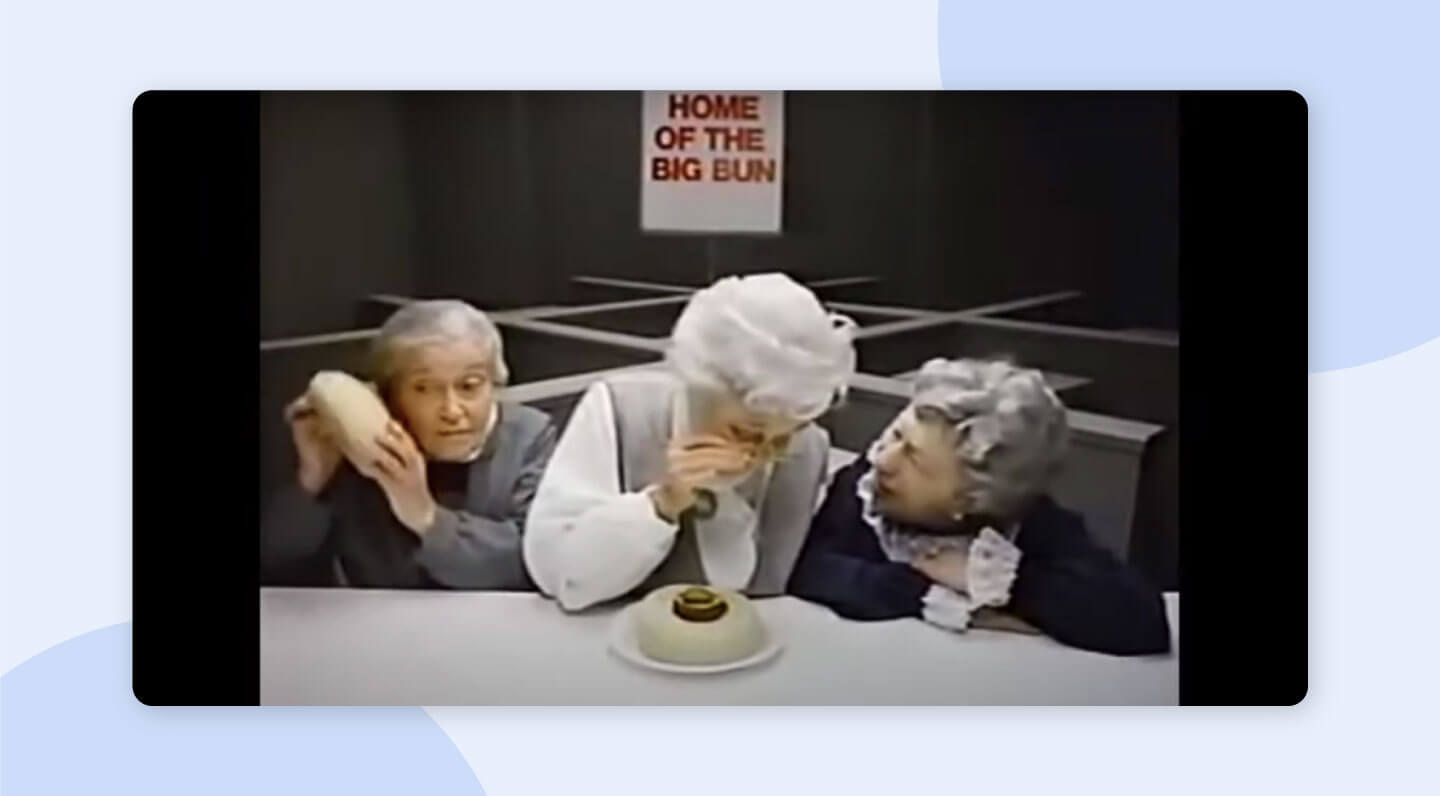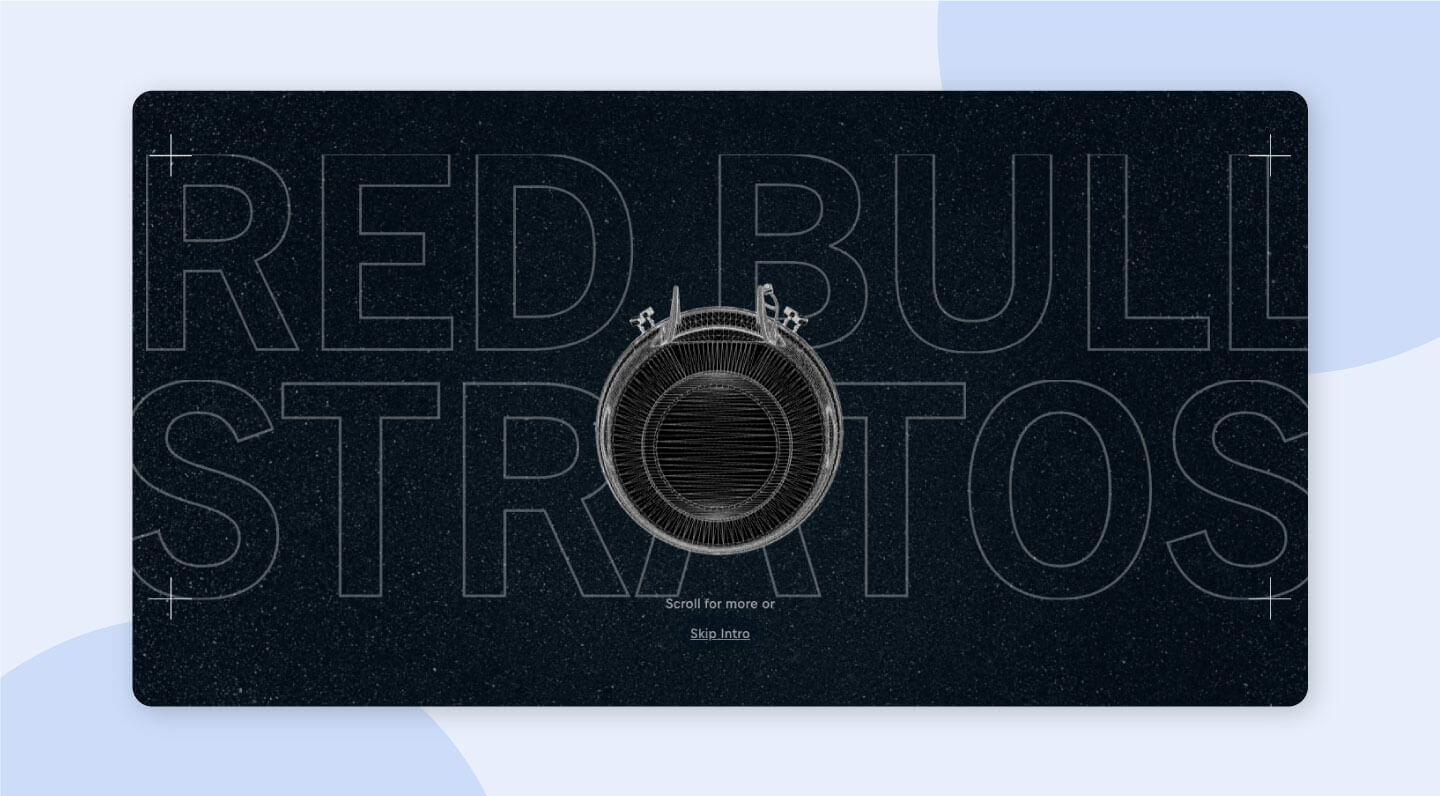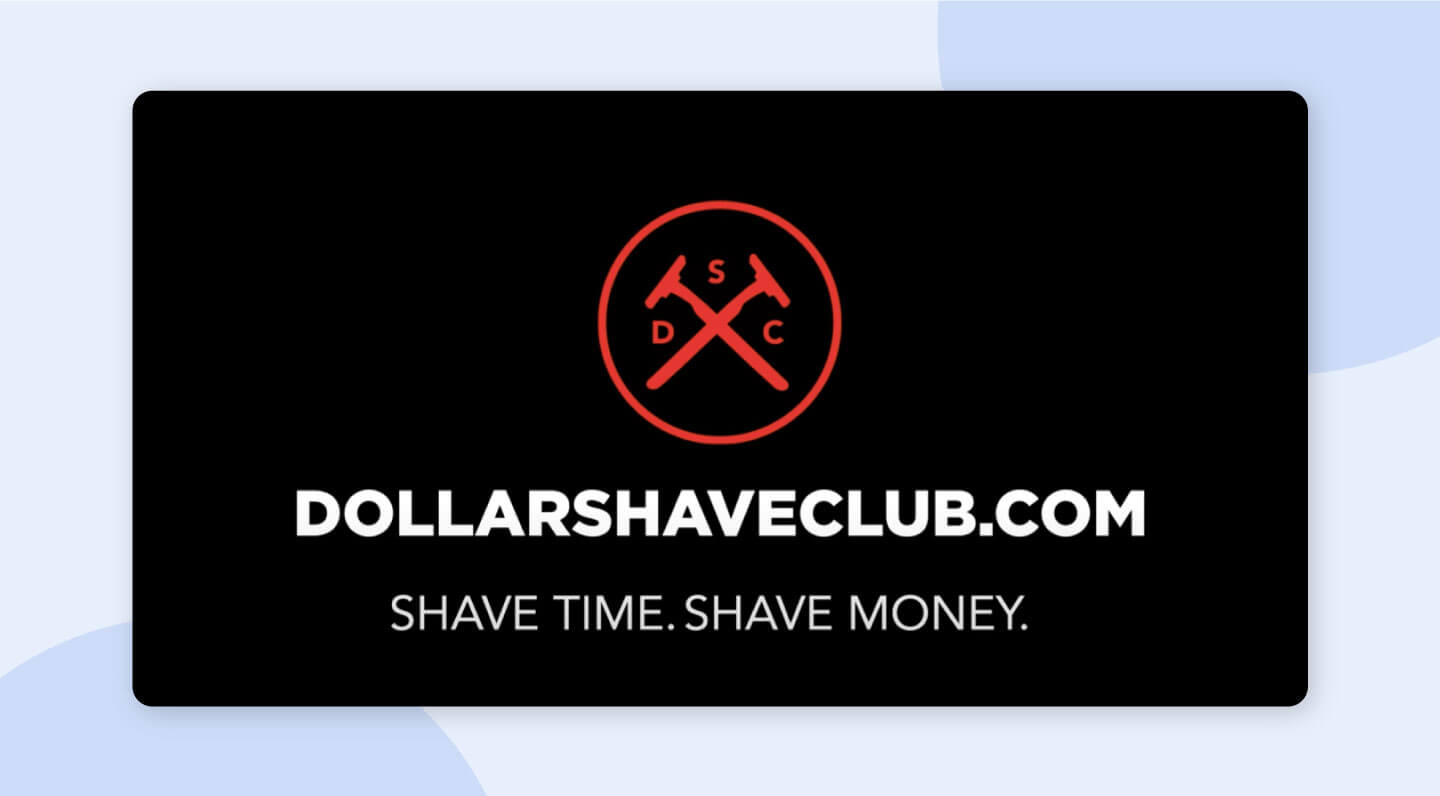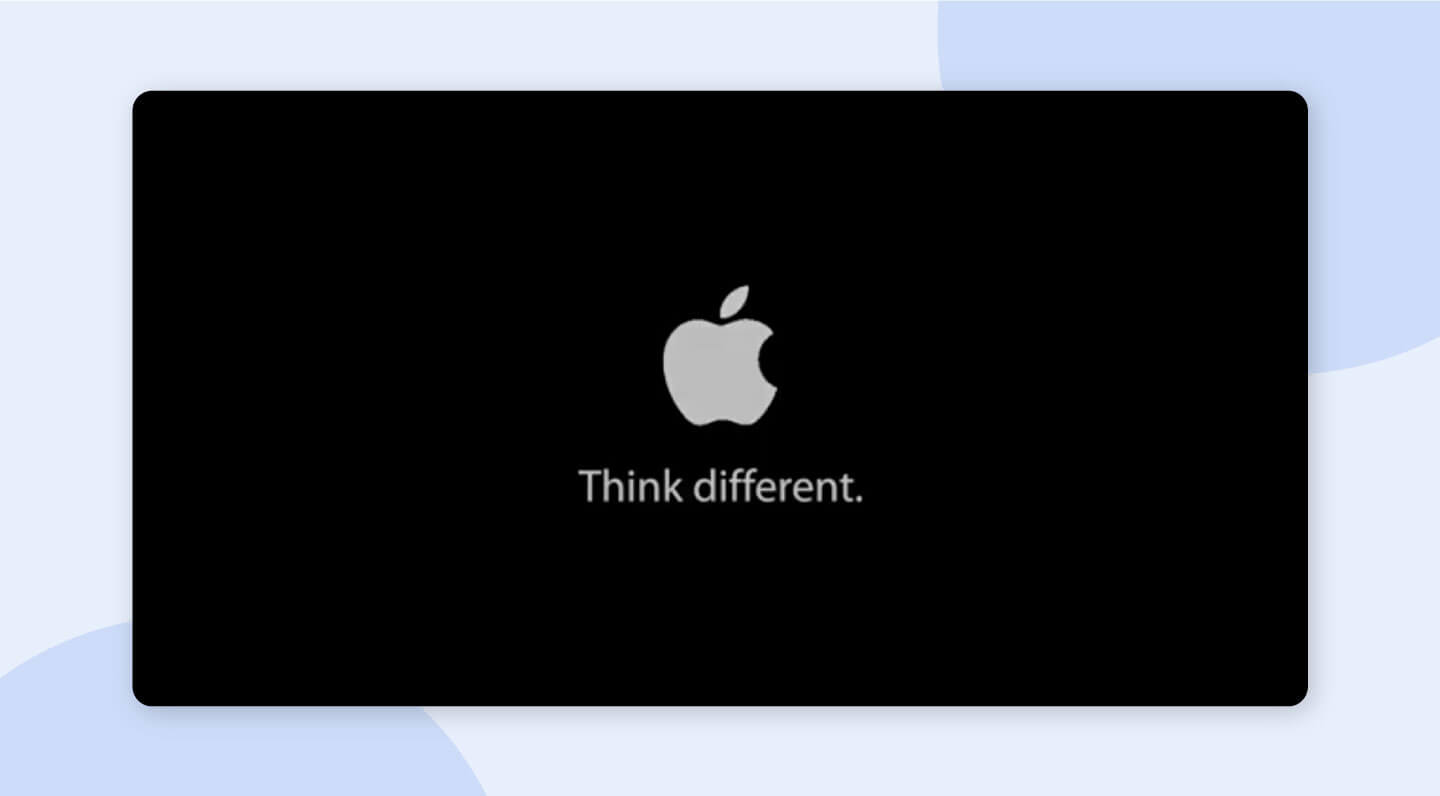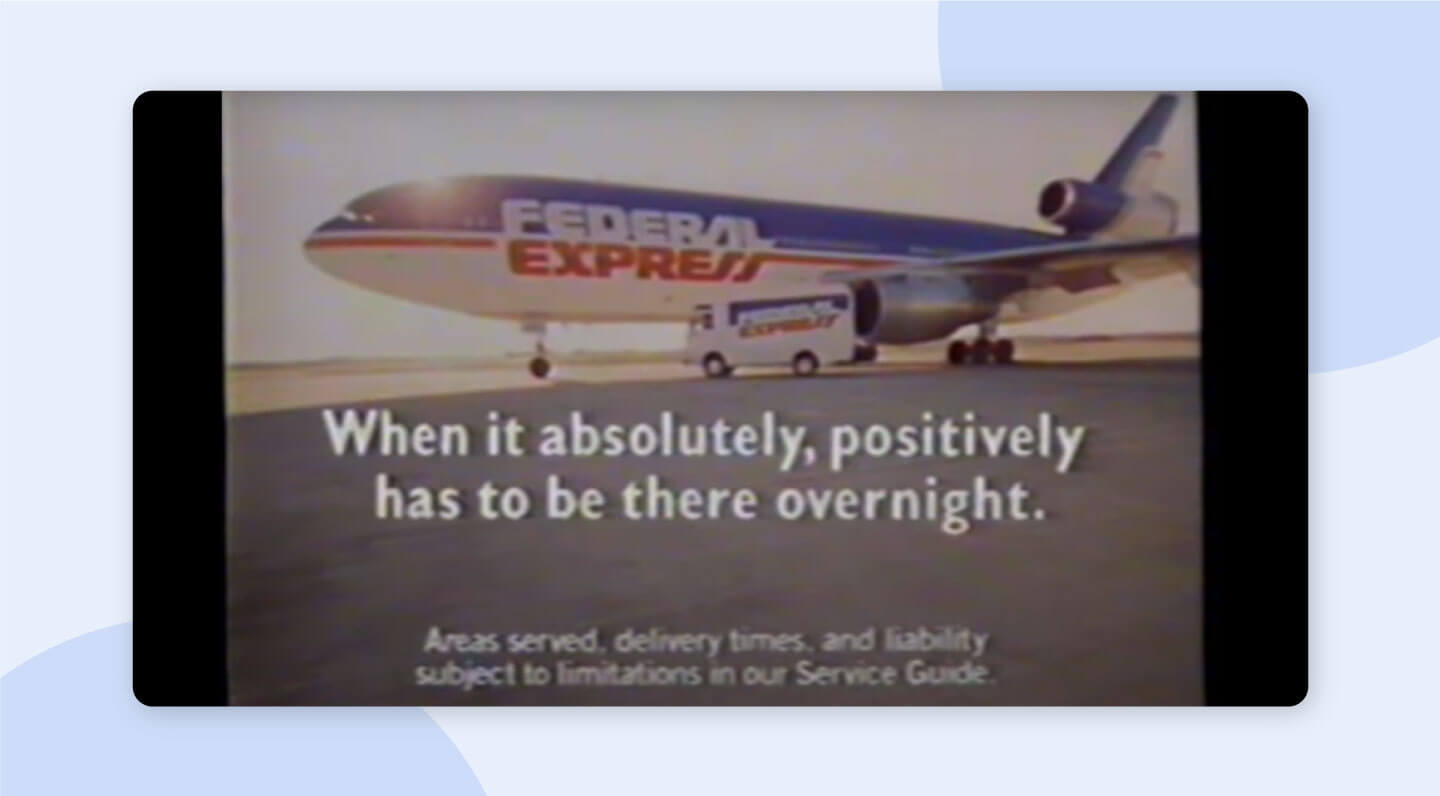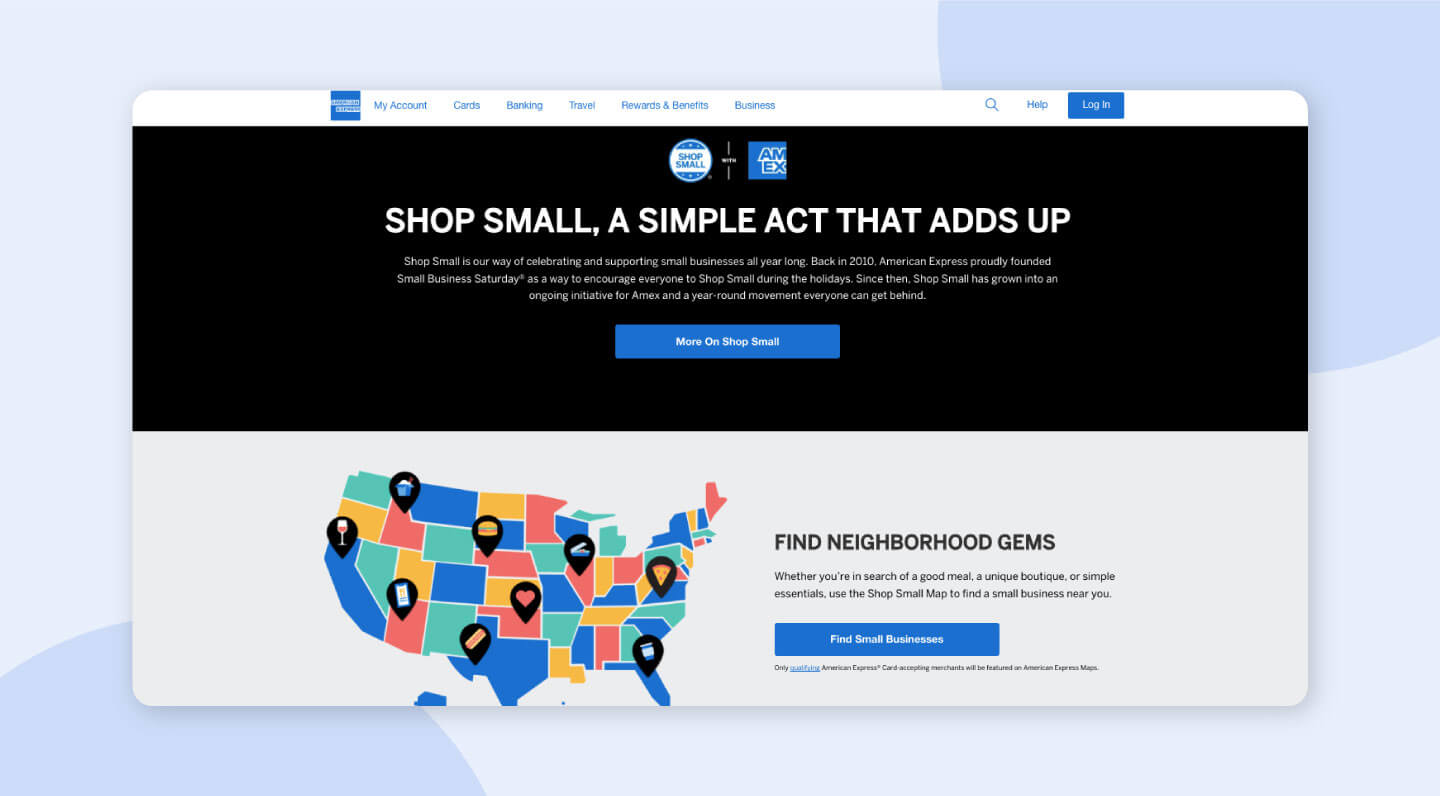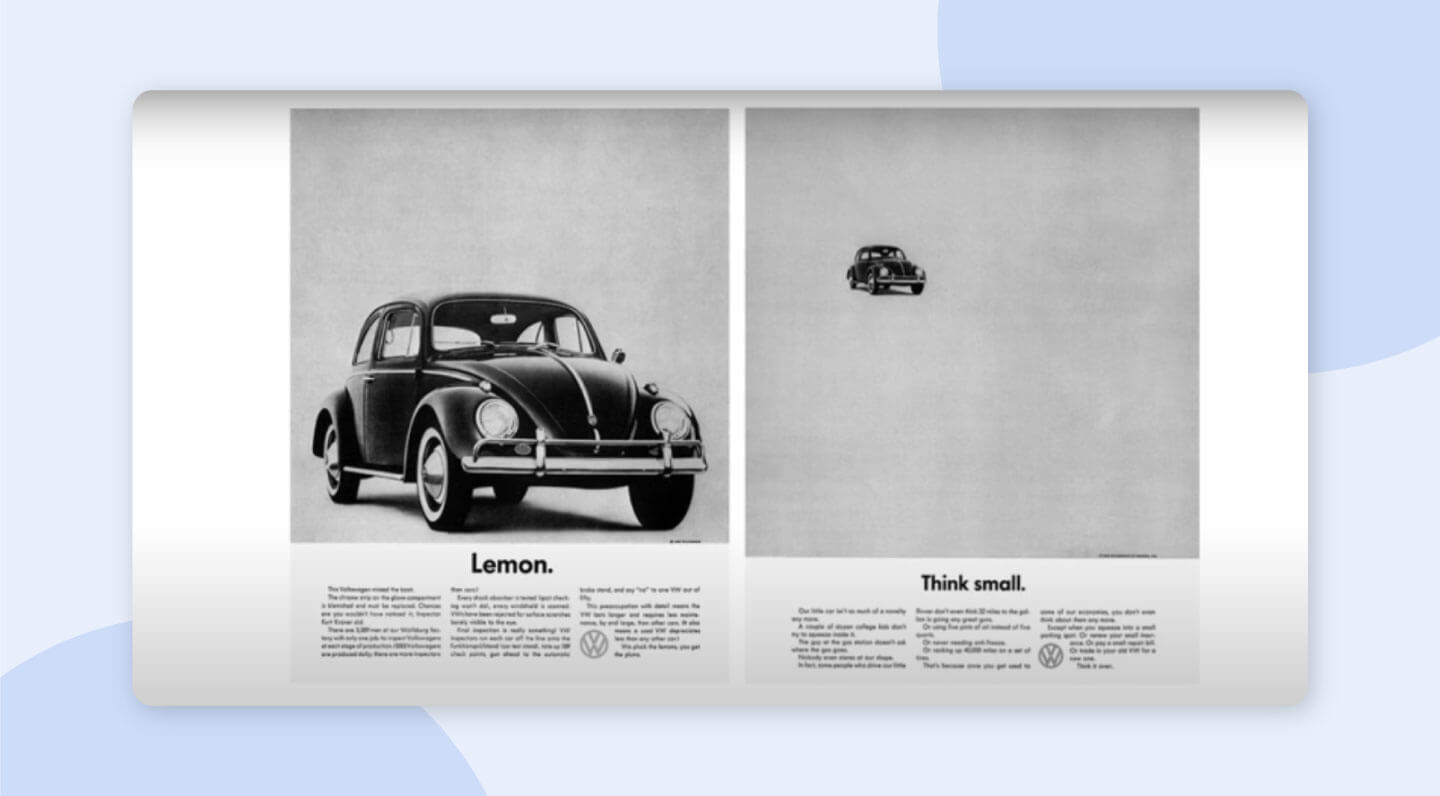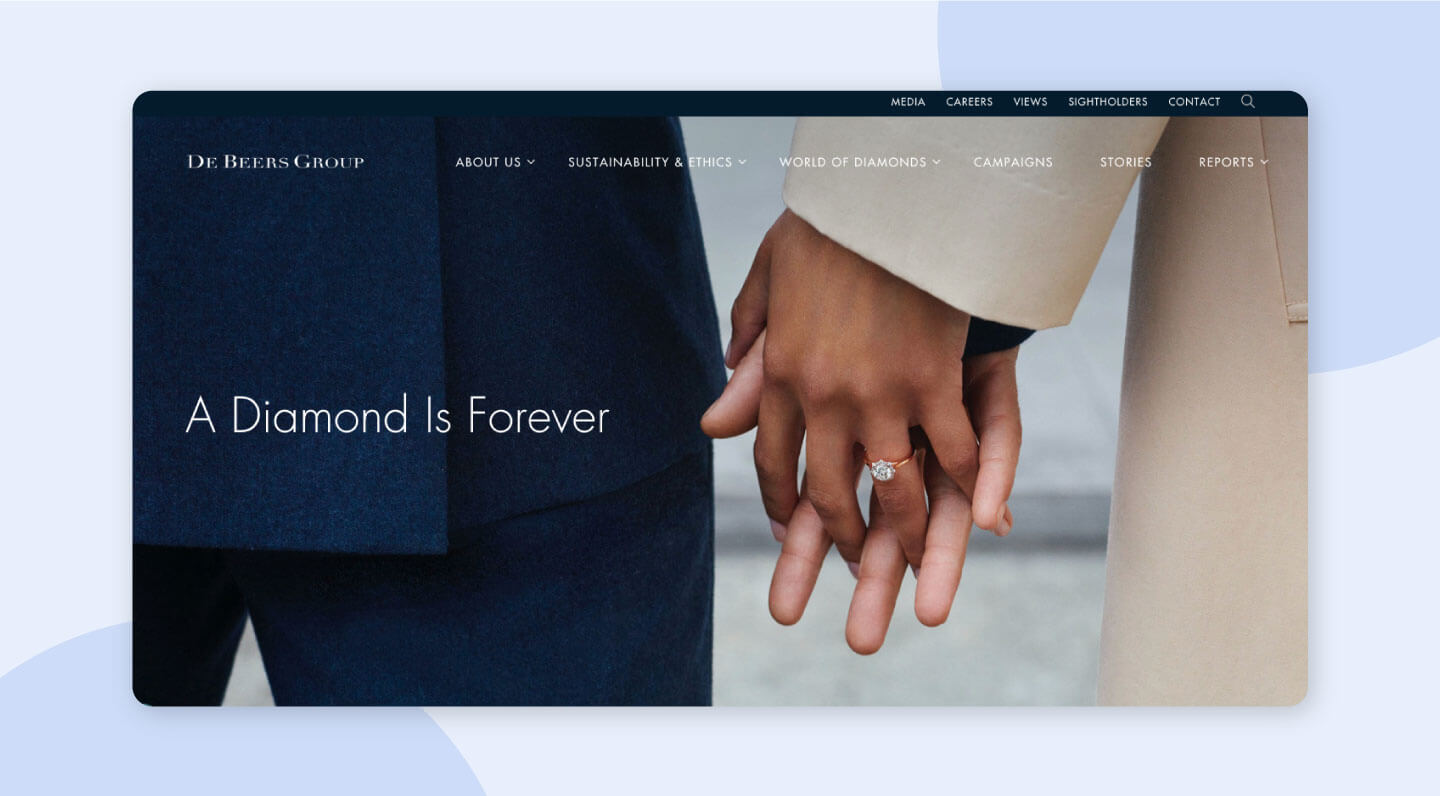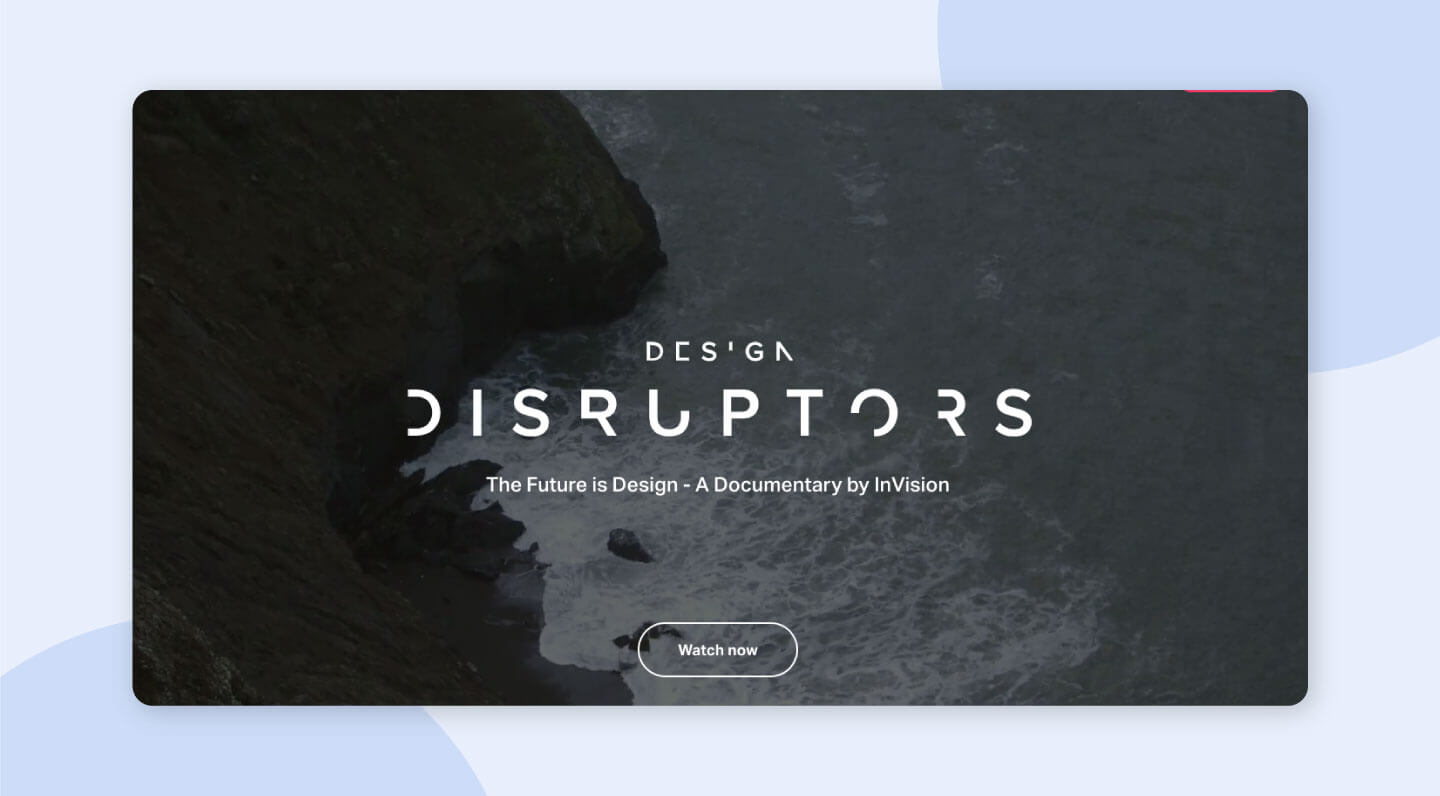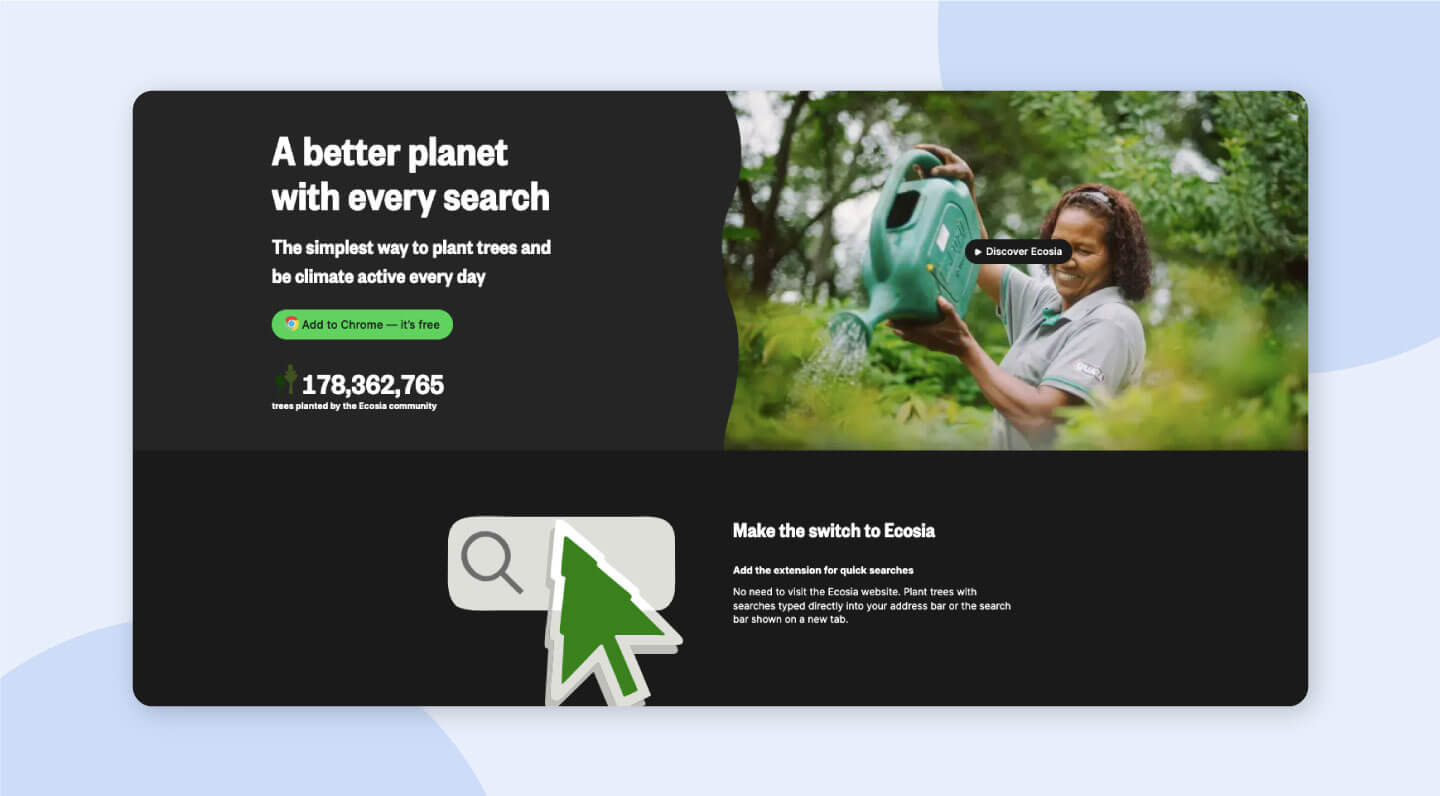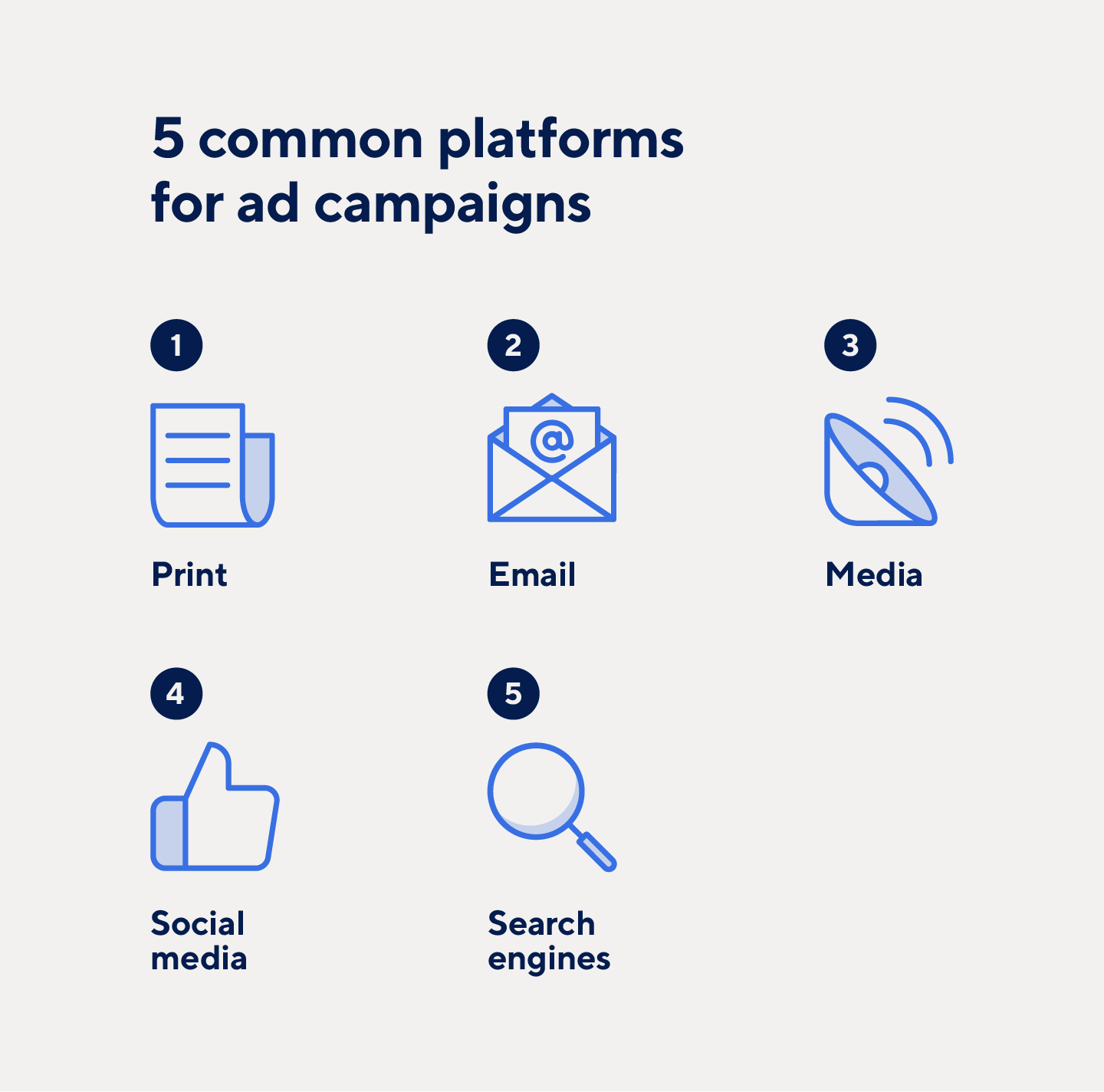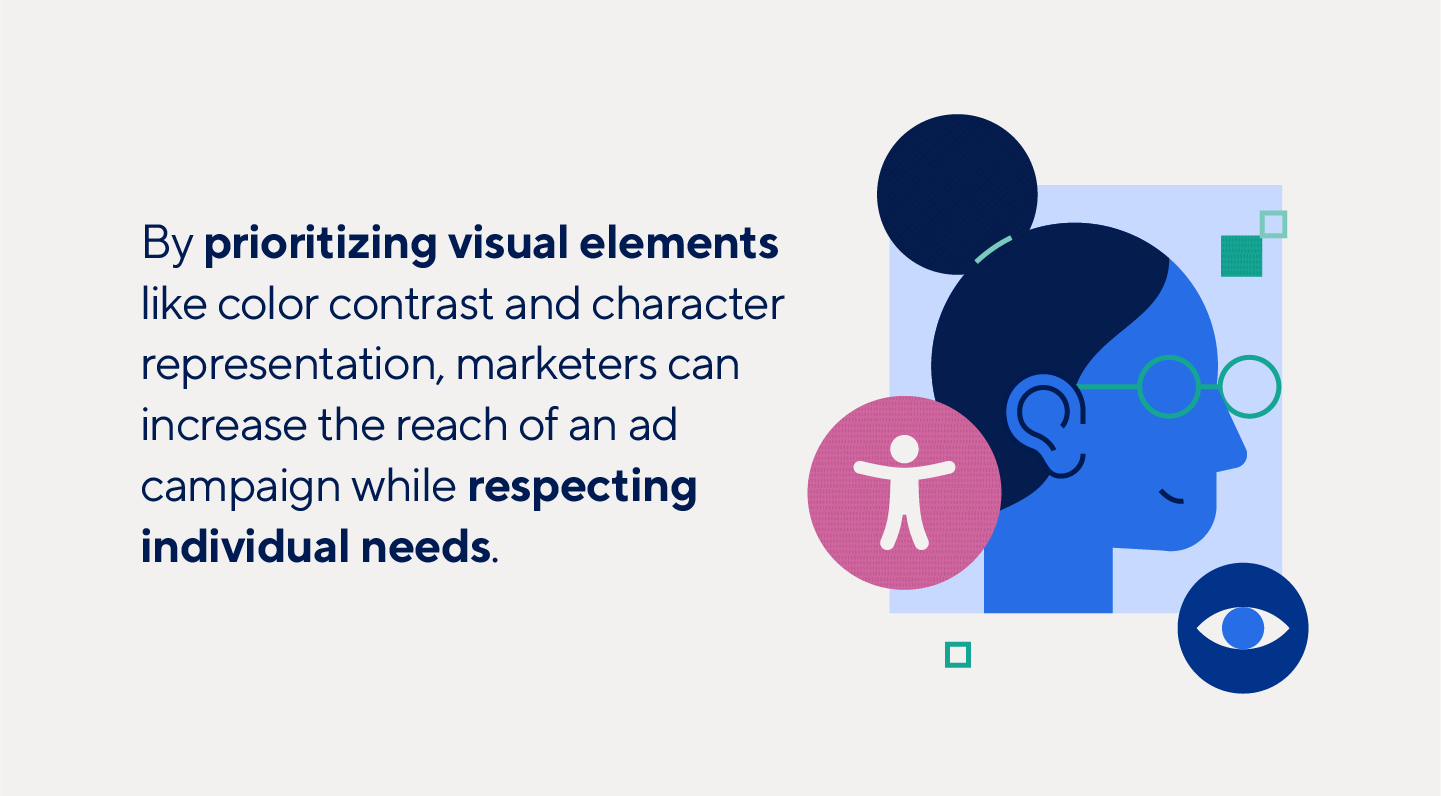1. Nike: Just Do It Campaign
In the 1980s, Nike’s biggest competitor was outselling the now-famous athletic brand. Nike was advertising almost exclusively to marathon runners, and it was losing the race. Enter “Just Do It”: the advertising campaign designed with everyone in mind. By expanding its target audience to athletes and nonathletes alike, Nike’s new tagline embodied the universal drive people feel while exercising. In doing so, they substantially increased their sales and created a long-lasting campaign that continues to resonate with the brand’s audience.
Launch Year: 1988
Campaign Medium: All
Expert Takeaway: “The slogan itself is simple and powerful, encouraging individuals to take action and push their limits. Moreover, Nike has consistently featured inspiring athletes in their advertisements, which helps to create an emotional connection with consumers. Overall, the ‘Just Do It’ campaign is memorable, motivating, and has had a lasting impact on advertising.” — Bridget Reed, co-founder at The Word Counter
2. McDonald’s: I’m Lovin’ It Campaign
While visual imagery is vital when creating an advertising campaign, sound can be just as effective. In 2003, McDonald’s ran an international ad campaign competition to update its current branding. Originally sung by Justin Timberlake before receiving one of the most famous upgrades in history, the jingle “Ba da ba ba ba, I’m lovin’ it” was awarded a permanent spot in McDonald’s advertisements.
Launch Year: 2003
Campaign Medium: All
Key Takeaway: Consider mixing audio into your advertising campaigns, including media or social media assets. When creating ad campaigns, user-generated content can be incredibly successful — jingles, social media posts, comments, and more. One of a brand’s strongest assets is an audience that advocates for the products and services they love.
3. Old Spice: The Man Your Man Could Smell Like Campaign
After Old Spice’s initial “Smell like a man, man” campaign went viral in early 2010, the brand jumped to social media to ride the wave. The Old Spice Man created interactive videos responding to comments on various social media platforms, including Facebook and Twitter, all while remaining in character and nailing the brand’s voice. While advertising Old Spice’s products, this ad campaign also increased their target audience and social media followers by thousands of people.
Launch Year: 2010
Campaign Medium: Media and social media
Expert Takeaway: Old Spice’s campaign is best “known for its humor, creativity, and viral impact. By targeting both men and women with witty and entertaining commercials, it created memorable moments and engaged viewers effectively.” — Olivia Lin, marketing specialist at Tabrick
4. Dove: Real Beauty Campaign
Some ad campaigns challenge society while others simply move with the current, and Dove’s Real Beauty campaign was designed to do the former. This ad campaign challenged the beauty industry’s incredibly high — often impossible — standards of female beauty. In a series of videos, advertisements, projects, and sketches, this still-evolving ad campaign increased the brand’s profits by almost $2 billion while celebrating, supporting, and standing with women.
Launch Year: 2004
Campaign Medium: Media and social media
Expert Takeaway: The Real Beauty campaign “challenged traditional beauty standards and promoted self-acceptance. It featured diverse women of different ages, sizes, and ethnicities, celebrating their unique beauty. This campaign resonated with audiences as it challenged the narrow definition of beauty portrayed in the media, making it compelling by promoting inclusivity and empowering women to embrace their natural beauty.” — Oliver Andrews, editor at OA Design Services
5. Snickers: You’re Not You When You’re Hungry Campaign
Beloved celebrities like Betty White and Elton John joined Snickers in one of the company’s most successful ad campaigns. In a series of video commercials, the brand used celebrities to portray unlikely behaviors caused by hunger. After receiving a Snickers candy bar, the celebrities transformed into everyday people acting normally, which solidified Snickers as a hunger-beating snack option rather than a simple candy bar.
Launch Year: 2010
Campaign Medium: Media
Key Takeaway: Clever ads that also provide solutions to customer issues frequently perform well. Learning your target audience’s pain points and providing simple, straightforward solutions through ad campaigns can help build brand loyalty and trust.
6. Always: #LikeAGirl Campaign
There’s nothing like a strong hashtag with a compelling message, and that’s exactly what Always created with their 2014 #LikeAGirl advertising campaign. This simple yet powerful campaign compared men’s and women’s abilities and proved that women — no matter their age — are just as capable as men. The campaign became wildly successful by fighting gender stereotypes.
Year: 2014
Campaign Medium: Media and social media
Expert Takeaway: “The #LikeAGirl campaign drove self-confidence and empowerment in girls. This 2014 campaign targeted the stereotypes that girls are weak and not powerful enough to achieve milestones. It also shows that the brand shares similar values with its customers, [which] fosters brand loyalty and gives meaning to the products.” — Jessica Shee, marketing manager at iBoysoft
7. Coca-Cola: Share A Coke Campaign
Gift shops are full of personalized keychains emblazoned with popular names like Mary, John, Rebecca, and David. Coca-Cola understood that people love to find and purchase items with specific names, so they created the Share a Coke campaign designed with personality in mind. Using various advertising platforms, Coca-Cola saw the massive impact personalization could have on its brand after selling more than 250 million bottles in the first few months of its original Australian release.
Year: 2011
Campaign Medium: Print, media, and social media
Expert Takeaway: “What actually made this campaign particularly compelling was its clever use of personalization, its ability to capture the attention of customers, and its effective use of social media. The Share a Coke campaign is one of the most successful and compelling ad campaigns of all time.” — Jaden Oh, chief of marketing at Traffv
8. Dos Equis: The Most Interesting Man In The World Campaign
Combining catchy taglines and unforgettable characters is a surefire way to create memorable advertising campaigns. When Dos Equis introduced its “The Most Interesting Man in the World” campaign in 2006, it slowly and subtly changed how customers viewed the brand’s product. With an indulgent character showcasing his preference for Dos Equis beer, ad viewers were introduced to a new way of thinking about potential vices, like alcohol and cigars.
Year: 2006
Campaign Medium: Print, media, and social media
Key Takeaway: Characterization can make an advertising campaign memorable. Dos Equis’s Most Interesting Man in the World is hard to forget — even though the original has since been replaced. Additionally, the original characterization gave the brand a specific energy that customers could only associate with Dos Equis beer.
9. Google: Year in Search Campaign
Google’s “Year in Search” campaign is an experiment in current events and relationships — what captured the globe’s attention in a single calendar year? By recognizing the brand’s most searched queries and connecting strangers or groups of people based on their search history, Google effectively communicated the message that nobody is truly alone. Using sources that range from local to global, the “Year in Search” campaign continues to unite Google’s users.
Year: 2010
Campaign Medium: Media
Key Takeaway: New, old, and potential customers want to feel seen and heard. Google’s “Year in Search” campaign shows its audience that it hears their desires. Additionally, this campaign showcases the brand’s humanity by connecting with its users, and connecting them with each other.
10. Wendy’s: Where’s the Beef? Campaign
In 1984, the phrase, “Where’s the beef?” took the world by storm. Instead of focusing solely on its products and offerings, Wendy’s dared to call out its competitor’s products in this famous ad campaign. The phrase stuck, but the brand didn’t wear it out or continue to knock its competitors. Instead, they let word-of-mouth advertising continue promoting this campaign while professionally creating new, improved, brand-focused advertisements.
Year: 1984
Campaign Medium: Media
Key Takeaway: Knocking a competitor’s product can be a component of a successful advertising campaign, but businesses must do it with tact. Once an initial statement has run its course, sometimes a brand should brainstorm new ad ideas instead of reprising successful campaigns.
11. TOMS: One For One
In 2006, TOMS introduced its One For One advertising campaign, which operated on a buy-one-give-one model. Under this model, TOMS promised to give a pair of shoes to communities in need for every pair bought. The brand later expanded this initiative to help support education, health, and community development projects.
Year: 2006
Campaign Medium: Print and media
Expert Takeaway: TOMS’ One For One campaign “is not just about selling shoes; it's about selling a cause. It makes consumers feel they are contributing to a positive change, adding a significant emotional value to each purchase. The key takeaway here is the power of purpose-driven marketing. In today's world, consumers are looking for more than just products; they're looking for brands that align with their values and make them feel good about their purchases.” — Kacper Rafalski, demand generation team leader at Netguru
12. Dunkin’: America Runs on Dunkin’ Campaign
It’s no secret that coffee is an important part of many people’s lives. In 2006, Dunkin’ (then Dunkin’ Donuts) coined the phrase “America runs on Dunkin’,” which highlighted how the brand could help anyone — from average customers to other businesses or organizations. This ad campaign successfully painted Dunkin’ in a new light and propelled the brand into the hands of new and returning customers.
Year: 2006
Campaign Medium: Print and media
Key Takeaway: Dunkin’ released its new tagline and an updated business plan. While an ad campaign can reach new customers and be successful on its own, it’s sometimes necessary to pair a campaign plan with a company rebrand.
13. ALS: Ice Bucket Challenge
Not every ad campaign needs to start with great aspirations — some of the greatest campaigns in history have been organic movements that went viral. For example, the ALS ice bucket challenge in 2014 gained notoriety due less to paid advertising and more to social media and influencer marketing. With celebrity endorsements like Bill Gates, Chris Pratt, and LeBron James, the ALS ice bucket challenge soared, and proved how successful advertising campaigns could be when they engaged audiences in an activity or competition.
Year: 2014
Campaign Medium: Media and social media
Key Takeaway: Don’t be afraid to leverage social media to help increase the success of an ad campaign. Experiential marketing elements like challenges and giveaways can encourage engagement, while other marketing tactics like influencer and affiliate marketing can increase an ad campaign’s reach.
14. Red Bull: Stratos Campaign
Red Bull’s Stratos campaign is one of the most famous and successful examples of collaboration marketing at work inside an advertising campaign. While staying true to its target audience and values, the company planned and funded an extreme skydiving stunt, which took place in 2012. The three-hour livestream — now an on-demand video — included extensive Red Bull advertising, which cemented the brand as a daring, risk-taking company.
Year: 2012
Campaign Medium: Media and social media
Key Takeaway: Even though Red Bull’s Stratos experiment became a record-breaking experience, it’s possible to use smaller-scale stunts to promote brands. If it aligns with your values and the interests of your target audience, consider weaving a new or daring event into the planning of your ad campaign.
15. Dollar Shave Club: Everyman’s Brand Campaign
After officially launching the brand in 2011, Dollar Shave Club took to the screens and produced one of the best advertising campaigns ever. With a budget of $4,500, the brand created a simple video advertisement showcasing the company’s durable products and affordable prices, which helped cement Dollar Shave Club as an “everyman” brand — or a brand designed for every person, everywhere. The video went viral, and the company got acquired for $1 billion in 2016.
Year: 2012
Campaign Medium: Media and social media
Expert Takeaway: “Despite working with a relatively modest budget, the Dollar Shave Club managed to use humor and authenticity to resonate deeply with its target audience. Rather than resorting to the glossy, polished ads typical of many razor companies, they positioned themselves as the 'everyman’s brand', and it worked phenomenally well. It's a great example of how sincere messaging can catapult a brand to remarkable heights. That debut video wasn't just an ad; it was the start of a billion-dollar story.” — Kyle Roof, co-founder of PageOptimizer Pro
16. California Milk Processor Board: Got Milk? Campaign
People typically view everyday products as necessities rather than luxuries. For children, milk is a necessary part of a balanced diet, and the California Milk Processor Board used this knowledge to target milk drinkers in its now-famous “Got Milk?” advertising campaign. Its celebrity-studded, milk-mustachioed campaign used various marketing tactics — including co-branding and early influencer marketing — to convince current milk users that the beverage was worth investing in and advocating for.
Year: 1994
Campaign Medium: Print, media, email, and social media
Key Takeaway: Instead of focusing its ad campaign on new customers, the California Milk Processor Board targeted former and current customers by advertising why they should continue using its product. In some cases, an ad campaign can extend its reach outside its current audience simply by focusing its efforts on those already interacting with its products.
17. Apple: Think Different Campaign
What do famous greats like Einstein, Gandhi, and Picasso have in common? Well, one thing: they each changed the world in their respective areas while fielding insults and disapproval at every step. Apple’s 1997 “Think Different” campaign highlighted these heroes — and others — to elevate the ideas behind innovation and individuality. As a brand going against the technological status quo, Apple’s ad campaign proved how successful thinking differently could be.
Year: 1997
Campaign Medium: Media
Expert Takeaway: “This campaign was revolutionary in simplicity and impact. It featured iconic figures such as Albert Einstein and Martin Luther King, Jr., celebrating individuals who challenged the status quo and changed the world. The campaign inspired people to think differently and embrace innovation. Apple effectively conveyed its brand values of creativity, individuality, and non-conformity through this campaign.” — Jonathan Zacharias, founder at GR0
18. FedEx: When It Absolutely, Positively Has To Be There Overnight Campaign
When ordering online or mailing packages across the country, from forgotten costumes or presents to items with short expiration dates, time is truly of the essence. Plenty of customers have experienced the need for overnight delivery. In 1978, FedEx created an ad campaign focused on the company’s delivery time rather than its prices, which eventually helped lead to the company’s shipping notoriety and brand success.
Year: 1978
Campaign Medium: Media
Key Takeaway: Consider creating an ad campaign to help solve a specific problem or answer a question. Your target audience is more likely to engage with your brand or ad campaign if they benefit from the interaction.
19. American Express: Shop Small Campaign
As a reaction to Black Friday, American Express began promoting Small Business Saturday in 2010. Its “Shop Small” ad campaign was created to help counteract the recession at the time, and the campaign was officially recognized by the U.S. Senate the following year. American Express aligned its goals and values with those of small, local communities, which helped create a lasting, successful advertising campaign.
Year: 2010
Campaign Medium: Media and social media
Key Takeaway: American Express’s “Shop Small” campaign did more than encourage shoppers to purchase products from small businesses — it highlighted the growing scarcity of local businesses and the difficult climate created by the recession. The brand’s campaign advertised the needs of the country’s local communities rather than its own, which promoted brand awareness and increased loyalty and trust.
20. Volkswagen: “Think Small” Campaign
Advertising campaigns are not just a marketing campaign of the present and future — Volkswagen’s “Think Small” campaign rocked the boat in the middle of the 20th century. Sticking with an honest, authentic approach, this brand never marketed itself as something it wasn’t. Instead, it aimed to convince its audience that different wasn’t bad — that it was, in fact, a major benefit of the brand. With its minimalist marketing design, Volkswagen changed the advertising world and the opinions of its critical market.
Year: 1959
Campaign Medium: Print and media
Expert Takeaway: “This campaign challenged car advertising norms by highlighting the Volkswagen Beetle's compact size. Its clever and minimalistic approach stood out and redefined how cars were marketed.” — Alana Armstrong, co-founding partner at Alan Aldous
21. De Beers: A Diamond Is Forever
Named the most memorable ad slogan of the century in 1999, De Beers’s “A Diamond Is Forever” campaign targeted men of marrying age. It communicated that every marriage deserves a diamond ring, and as a diamond lasts forever, so should a marriage with a diamond ring. This ad campaign’s message mixed necessity with luxury and changed the course of the jewelry industry.
Year: 1948
Campaign Medium: Print
Expert Takeaway: Attempting to counteract decreasing diamond purchases, De Beers created a campaign designed to showcase the longevity of diamonds and their enduring value. “De Beers’s ‘A Diamond Is Forever’ campaign targeted young men who wanted to demonstrate their status and present something extra special to the significant woman in their lives.” — Khaled Bentoumi, co-founder of *anyIP*
22. InVision: Design Disruptors
As technology and technology-focused industries increase, InVision recognized the need to expand design beyond its current limits. Its documentary and ad campaign — Design Disruptors — featured 15 designers from unique companies. This campaign helped transform plenty of industry expectations concerning brand design by focusing on innovations in product design.
Year: 2016
Campaign Medium: Media and social media
Expert Takeaway: “InVision effectively used Facebook’s retargeting capabilities to guide viewers through the series, building brand credibility by providing valuable industry insights. By offering a downloadable resource at the end of the series, they captured leads and nurtured these relationships beyond the initial interaction. What's compelling is their strategic use of Facebook’s tools and video content to simultaneously position themselves as a thought leader, build a community, and generate leads. This campaign is a testament to the potential of social media marketing when aligned with a brand’s broader goals.” — George Panayides, digital marketing technician at The Digital XX
23. Ecosia: Plant Trees While You Search
Looking to create a better world, Ecosia launched its “Plant Trees While You Search” initiative, which plants trees for every online search made by its users. This ad campaign positions the brand as an eco-aware online tool that uplifts local communities in more than 35 countries. Instead of focusing solely on its users’ actions, this campaign extends Ecosia’s contentious thinking beyond the borders of the search bar.
Year: 2009
Campaign Medium: Media
Expert Takeaway: “Its simplicity and impactful message make it compelling. It's not just about promoting a product but about making a difference in the world. [Ecosia’s] campaign success lies in its ability to connect with the audience on a deeper, emotional level, making it a powerful example of purpose-driven marketing.” — Sarah Berthe, founder at SEO with Sarah
What Is An Ad Campaign?
An ad campaign refers to a collection of advertisements that use similar tones, messaging, and design assets to portray a similar message. Businesses can optimize specific portions of an ad campaign for different platforms, which can help brands continue to promote their messages through a product’s lifecycle without boring or frustrating their audience.
The most common platforms marketers include in ad campaigns include the following:
- Print: Newspaper ads, physical mail, and magazine advertisements are some of the most common forms of print advertising.
- Email: Catchy subject lines and time-sensitive messages usually comprise email ads that users can view on smart devices from virtually anywhere.
- Media: Many marketers will design media-specific campaigns, from television to radio. These types of campaigns can even show up on social media platforms.
- Social Media: From in-app advertisements to pop-up notifications and video ads, social media has become one of the most popular platforms for ad campaigns.
- Search Engines: Search engines use an auction-based system to allow marketers to bid on keywords and advertise services or products on search engine results pages.
Types of Ad Campaigns
Before creating an ad campaign, it’s important to understand the different types of campaigns and when to use them. There are four main types of ad campaigns:
- Informative: Informative campaigns are meant to inform customers about products, services, promotions, and more. These campaigns usually aim to increase brand awareness, authority, trust, and loyalty.
- Persuasive: Persuasive campaigns are designed to encourage readers to make a decision. These campaigns can target products, sales, subscriptions, time-sensitive promotions, and other conversion-centric decisions.
- Reminders: With so many advertisements flooding the average person’s day-to-day life, reminder ads simply remind audience members of their purchasing options — including expiration dates for rewards and promotions.
- Reinforcement: The purpose of reinforcement ads is to reassure customers of their decisions and provide guidance about the best ways to use or enhance their product experience after purchasing.
Elements of a Successful Ad Campaign
No matter what ad campaign you create, there are usually two key components: a target audience, and campaign goals. Whether your campaign is designed to sell a product or promote a service, including these elements in your campaign’s design can help you succeed.
Audience-Centric
A successful ad campaign keeps its audience in mind, and always engaged. Whether your campaign aims to increase brand awareness, attract new customers, or keep the interest of previous customers, you need to know and understand your target audience to create an audience-centric campaign.
Cohesive
While an ad campaign uses various types of advertisements across different platforms, it is still a singular campaign attempting to reach specific goals. To be successful, each component of the campaign must be cohesive — even if you design them for different audiences or platforms. A creative project management plan for an advertising campaign can ensure that your language, tone, design assets, and other campaign elements follow a singular set of guidelines.
Visually Appealing
Unless you are solely advertising on audio-only platforms, the visual appeal of your ads can greatly affect their success. Using engaging colors, unique fonts, and fun illustration styles can increase the appeal of an ad campaign’s offerings. Plus, by prioritizing color contrast and character representation in a campaign’s designs, marketers can make advertisements both accessible and appealing — this can greatly increase a campaign’s potential reach while respecting individual needs.
Clear Messaging
All components of a single campaign need to focus on and prioritize a single message. Whether promoting a new product, giving away a free trial, or increasing brand awareness, your advertisements should all use clear, straightforward messaging focused on the same outcome.
Goal-Focused
Along with clear messaging, an ad campaign should be focused on a specific goal, or goals. Your messaging will change depending on the action you want your audience to take. For example, if you want your audience to trust you, you must create informational, researched-based advertisements designed with their needs in mind. Before creating any promotional material, decide on a campaign’s goal and adjust your language, visuals, and medium choices.
Empower your people to go above and beyond with a flexible platform designed to match the needs of your team — and adapt as those needs change.
The Smartsheet platform makes it easy to plan, capture, manage, and report on work from anywhere, helping your team be more effective and get more done. Report on key metrics and get real-time visibility into work as it happens with roll-up reports, dashboards, and automated workflows built to keep your team connected and informed.
When teams have clarity into the work getting done, there’s no telling how much more they can accomplish in the same amount of time. Try Smartsheet for free, today.

